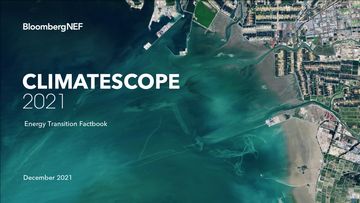
Policy
89% of emissions are covered by a net-zero target in force or under discussion
89% of global emissions are now covered by a net-zero target in force or under discussion. This contrasts with 80% on the day before the Glasgow summit began, and just a third in January 2020. Countries responsible for nearly two-thirds of global greenhouse-gas emissions have a net-zero target in force. A further 27% have such a goal under discussion. The surge in these targets was triggered by the Intergovernmental Panel on Climate Change’s 2018 report showing that the world must reach net zero by mid-century to limit global warming by 1.5 degrees above pre-industrial levels.
Several major economies made new pledges at COP26. The biggest announcement came from India, which committed to reach net-zero emissions by 2070. Its 2070 deadline disappointed some commentators, but the fact that Prime Minister Modi was willing to make such a commitment is a sign of progress. Southeast Asian countries are also stepping up to the plate in setting long-term climate goals. The four-largest greenhouse gas emitters in the region – Indonesia, Thailand, Vietnam and Malaysia – now have a carbon neutrality or net-zero emission goal between 2050 and 2065.
Most emerging markets lack conducive policy environments for renewables
Limited markets have the necessary supportive renewable energy policies in place. Over 80% of the 107 emerging markets surveyed in Climatescope have a renewable energy target, but more specific and effective policies are lacking.
Auctions have proven to be the most effective policy to boost clean energy investment in developing nations, but are in force in less than 50% of the markets. Net metering, one of the key policies to drive deployment of small-scale solar is also available in just 49% of the markets surveyed.
Import tax reductions or exemptions are the second most popular policy in emerging markets, present in 61% of the countries surveyed. VAT reduction or exemptions are present in 49% of the countries.
Feed-in tariffs are present in a fourth of nations surveyed. The policy remains highly effective to kick-off new clean energy markets.
Renewable energy targets have been ineffective in influencing other policies
Renewable energy targets have rapidly spread to more emerging markets, but other clean energy policies have not followed the same path. The share of emerging markets with targets in force jumped from 67% in 2019 to 82% in 2021, but implementation of other mechanisms has been weak.
The share of developing nations with auctions and feed-in tariffs in force has remained flat compared to 2019. Over the past three years, less than half of the emerging markets surveyed in Climatescope had auctions in force and just around a quarter of the total had a feed-in tariff mechanism in place.
Net metering has spread to more countries. The presence of the self-generation incentive has grown from 41% of the markets analyzed in 2019, to 44% in 2020 and 49% in 2021. The growth of net-metering incentives is helping distributed solar grow in volume and spread to more nations.
Lack of policies limit EV uptake in emerging markets
Relatively few emerging markets have clean transport policies in force. While 93% of the developed nations surveyed by Climatescope have clean transport targets, just 22% of the emerging markets analyzed do.
Direct purchase incentives, which lower upfront costs of buying EVs, are effective at kick-starting markets, but are still limited to a small share of developing nations. These are expensive for governments, thus harder to introduce in poorer nations. They typically include EV purchase incentives, EV income tax reductions and EV import tax reductions.
Charging infrastructure policies help lower EV deployment barriers. Nearly half of developed nations have EV charging infrastructure targets in place, compared to only 15% of emerging markets surveyed.
Clean buildings policies are highly concentrated in developed nations
Three quarters of the clean building policies Climatescope tracked were on the books in developed nations. As with the transport sector, a lack of incentives has limited decarbonization of the sector in emerging markets.
Low-carbon heat targets or roadmaps are the most popular policy mechanisms among countries surveyed. These are present in 82% of developed nations and in 39% of emerging markets.
Grants and loans to purchase heat pumps follow as the second most common policy. The policy is in place in 68% of the developed nations and 21% of the emerging markets.
Share
On this page
